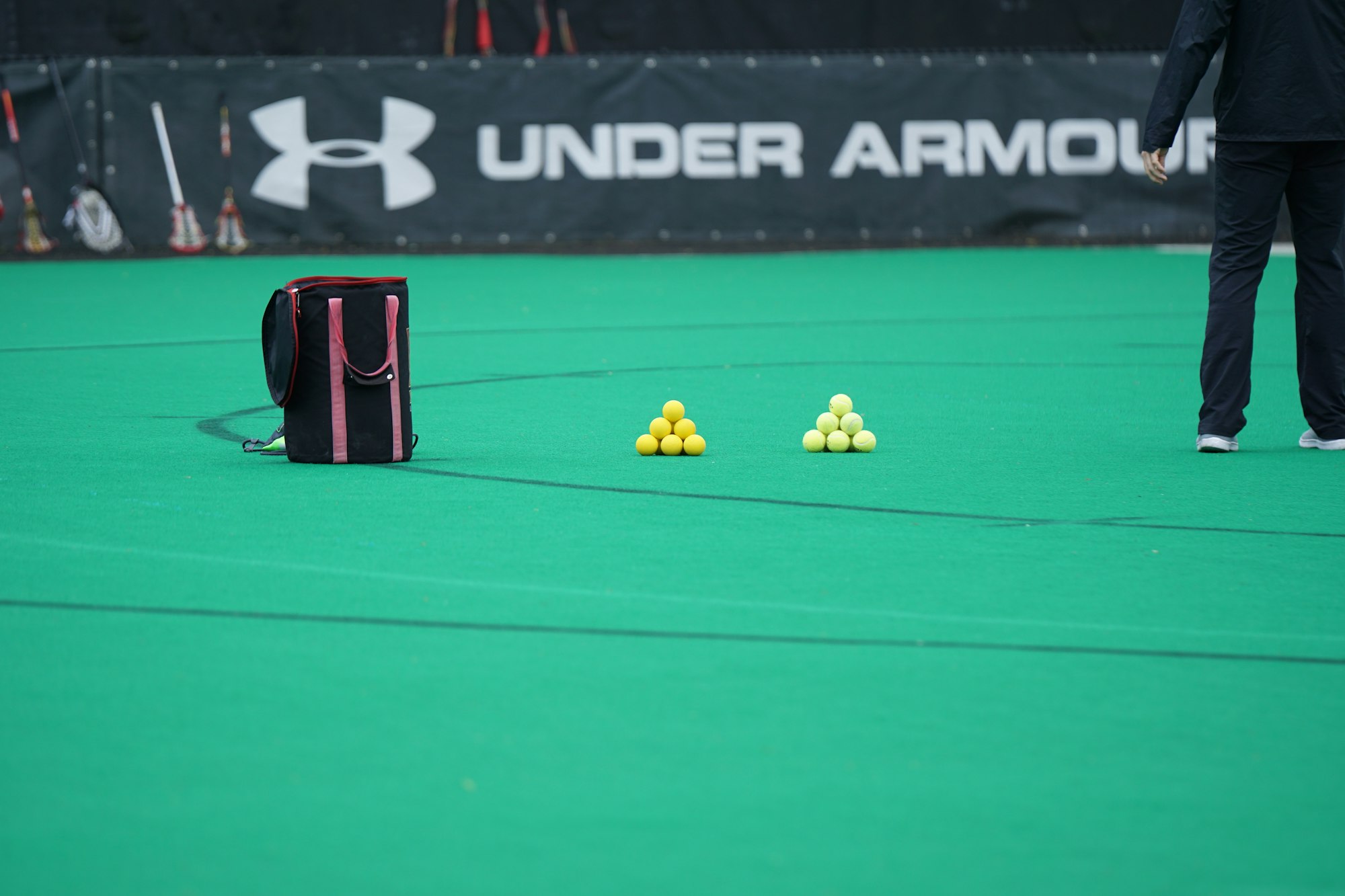Lacrosse, a sport with deep historical roots, has seen its equipment evolve significantly over time.
One of the most crucial pieces of equipment in the game is the lacrosse ball, which has undergone a fascinating transformation in terms of the materials used for its construction.
This article delves into the original materials used to make lacrosse balls and traces their evolution to the present day.
The Early Days of Lacrosse Balls
In the early days of lacrosse, a game connected to the cultural traditions of Native American tribes, the balls were made from very different materials than what we see today.
Originally, they were crafted from wood or deerskin stuffed with hair or other materials. These balls were not uniform in size or weight, leading to a game that was much less standardized than the modern version.
From Natural to Synthetic: The Evolution of Materials
As the sport grew and rules began to form, the need for a more consistent and durable ball became apparent. This led to the introduction of rubber lacrosse balls.
The first rubber balls were made from latex rubber, a natural material that offered better bounce and grip than the early versions. However, these balls were not yet the standardized athletic equipment we know today.

The Introduction of Vulcanized Rubber Lacrosse Balls
The game-changing moment came with the introduction of vulcanized rubber. This process, which involves adding sulfur to rubber to improve its durability and elasticity, led to the creation of lacrosse balls that could withstand the rigors of the sport.
Vulcanized latex rubber became the standard for lacrosse balls, providing the necessary consistency for competitive play.
Standardization by Governing Bodies
Governing bodies like the National Operating Committee on Standards for Athletic Equipment (NOCSAE) have set specific standards for lacrosse balls to ensure safety and fairness in the game.
These standards dictate the size, weight, and bounce of the balls, leading to the uniformity we see in the sport today. Lacrosse ball manufacturers must adhere to these guidelines to have their balls approved for official use.

The Modern Lacrosse Ball
Most modern lacrosse balls are made from solid rubber, which provides the necessary weight and bounce for the game.
These balls are typically white for men's lacrosse and yellow for women's lacrosse, although other colors like pink and half-and-half designs are also available for practice sessions.
The rubber used is often a mix of natural and synthetic materials to achieve the desired performance characteristics.
Lacrosse Ball Materials: Beyond Rubber and Silicone
When we think of lacrosse balls, the image of hard rubber spheres often comes to mind. However, the quest for the perfect lacrosse ball has led to experimentation with various types of elastomeric materials.
At one point, manufacturers even considered using vinyl to create a more durable and cost-effective option. The idea was to produce a ball that could withstand the rigors of the lacrosse game while providing consistent performance.
Vinyl, known for its resilience in products like car tires, seemed like a promising alternative to the traditional latex rubber balls.
Yet, despite the potential benefits, vinyl lacrosse balls never quite caught on. The primary reason was the material's response to temperature changes, which could affect the ball's bounce and hardness.
As a result, the industry continued to favor latex rubber balls, which offer a reliable balance of hardness and elasticity.
These balls are designed to meet the stringent specifications set by governing bodies like the NCAA, ensuring that every lacrosse ball size and weight is consistent, whether for men's or women's lacrosse balls.

The Role of Color in Lacrosse Balls
Have you ever wondered why lacrosse balls come in different colors? While the standard white balls are widely recognized, yellow balls are specifically used in women's lacrosse games.
The color differentiation is not just for aesthetics; it serves a practical purpose. Yellow balls are easier to spot against the backdrop of a grassy field and the fast-paced action of the lacrosse game.
This visibility is crucial for players as they track the ball's movement and position their lacrosse stick for the perfect catch.
The choice of color also extends to training and practice sessions. Coaches may use balls of various colors to create drills that help players improve their reaction time and hand-eye coordination.
For instance, a drill might involve a mix of white and yellow balls being thrown at a goalie to simulate game-like conditions.
The different colors force the goalie to quickly identify and react to the ball, enhancing their focus and agility in the middle of an intense lacrosse match.
Lacrosse Balls in Different Variants of the Game
Box lacrosse, an indoor version of the sport, uses balls made from the same materials as the outdoor game. However, the balls may differ slightly in terms of grip and bounce to accommodate the different playing surfaces.
Similarly, the balls used in women's lacrosse are designed to meet the specific requirements of the women's game, which has different rules and standards.
The Size and Weight of a Lacrosse Ball
The official ball size and weight are crucial for the consistency of play. The circumference of a lacrosse ball is typically around 7.75 to 8 inches, and it weighs about 5 to 5.25 ounces.
These dimensions ensure that the ball can be effectively caught, thrown, and shot using lacrosse sticks, which are also standardized in terms of size and shape.

Inside a Lacrosse Ball
What's inside a lacrosse ball? Unlike the early versions filled with hair or other materials, modern lacrosse balls are solid rubber spheres. This solid construction is key to their durability and consistent performance.
The rubber compounds used can vary, but they often include many elastomeric materials like crosslinked polyurethane, which helps the ball maintain its shape and elasticity.
The Durability of Lacrosse Balls
Rubber degrades over time, especially when exposed to the elements. Lacrosse balls are no exception, and their lifespan can be affected by factors like UV exposure and repeated use.
To maintain their performance, it's important to remove dirt and grease from the balls and store them properly when not in use.
The Future of Lacrosse Balls
As technology advances, we may see lacrosse balls made from different materials or with new features to enhance the game. Innovations in materials science could lead to balls with even better grip, bounce, or durability.
However, any new developments will need to be carefully evaluated by governing bodies to ensure they meet the sport's standards.
Some Final Thoughts
Lacrosse balls have come a long way from their origins as handmade objects crafted from natural materials. The transition to vulcanized rubber balls has standardized the sport, making it safer and more consistent.
As the game continues to grow, the materials and manufacturing processes of lacrosse balls will likely continue to evolve, but the core requirements of size, weight, and performance set by governing bodies will remain the cornerstone of this essential piece of athletic equipment.

FAQ's
What were lacrosse balls originally made of?
Lacrosse balls were originally made from materials like wood or deerskin stuffed with hair or other natural substances.
What material are most modern lacrosse balls made of?
Most modern lacrosse balls are made of solid rubber, typically vulcanized to enhance durability and elasticity.
How are lacrosse balls regulated?
Lacrosse balls are regulated by governing bodies such as the National Operating Committee on Standards for Athletic Equipment (NOCSAE), which sets standards for size, weight, and bounce to ensure safety and consistency in the game.








Member discussion